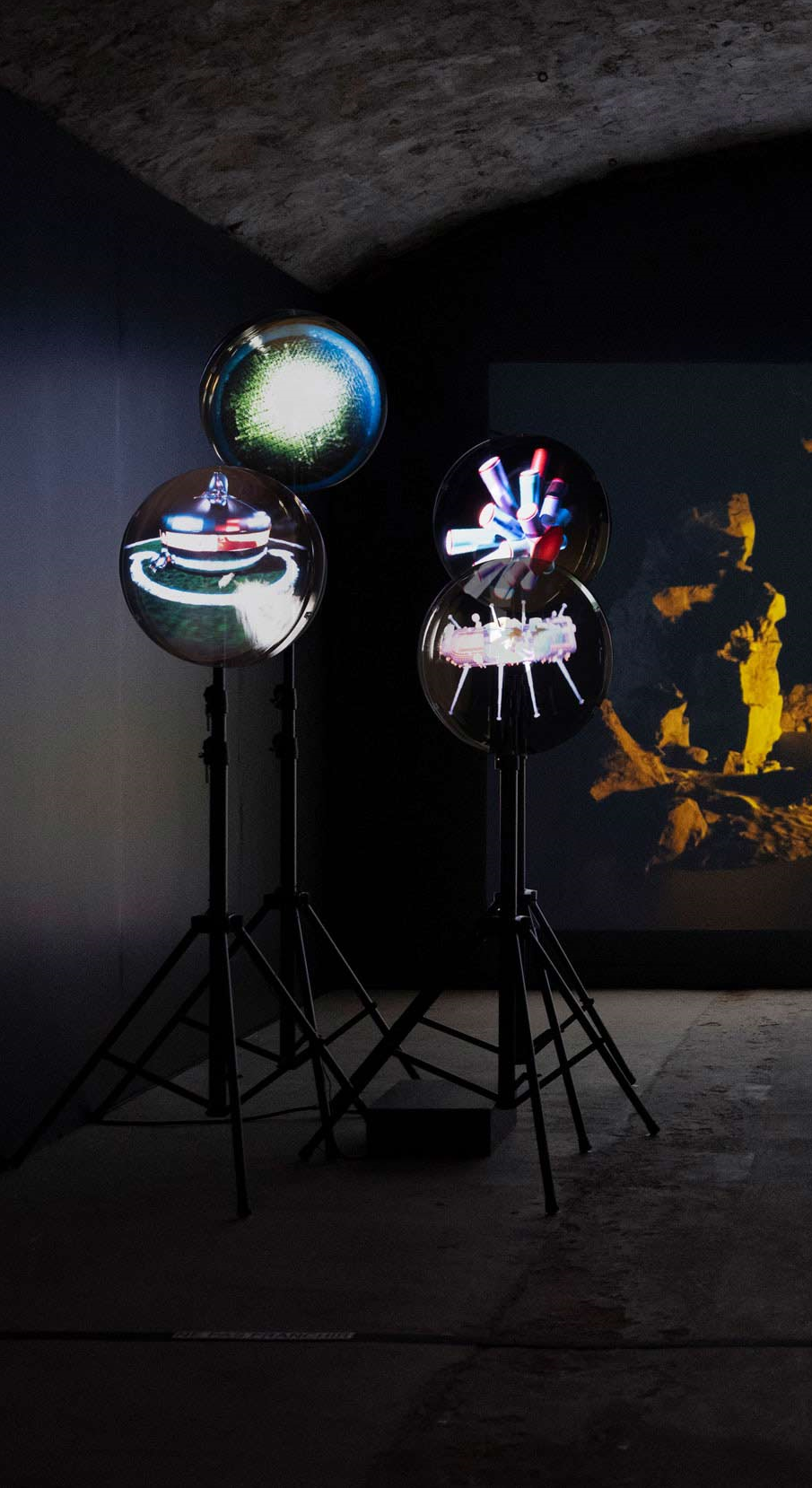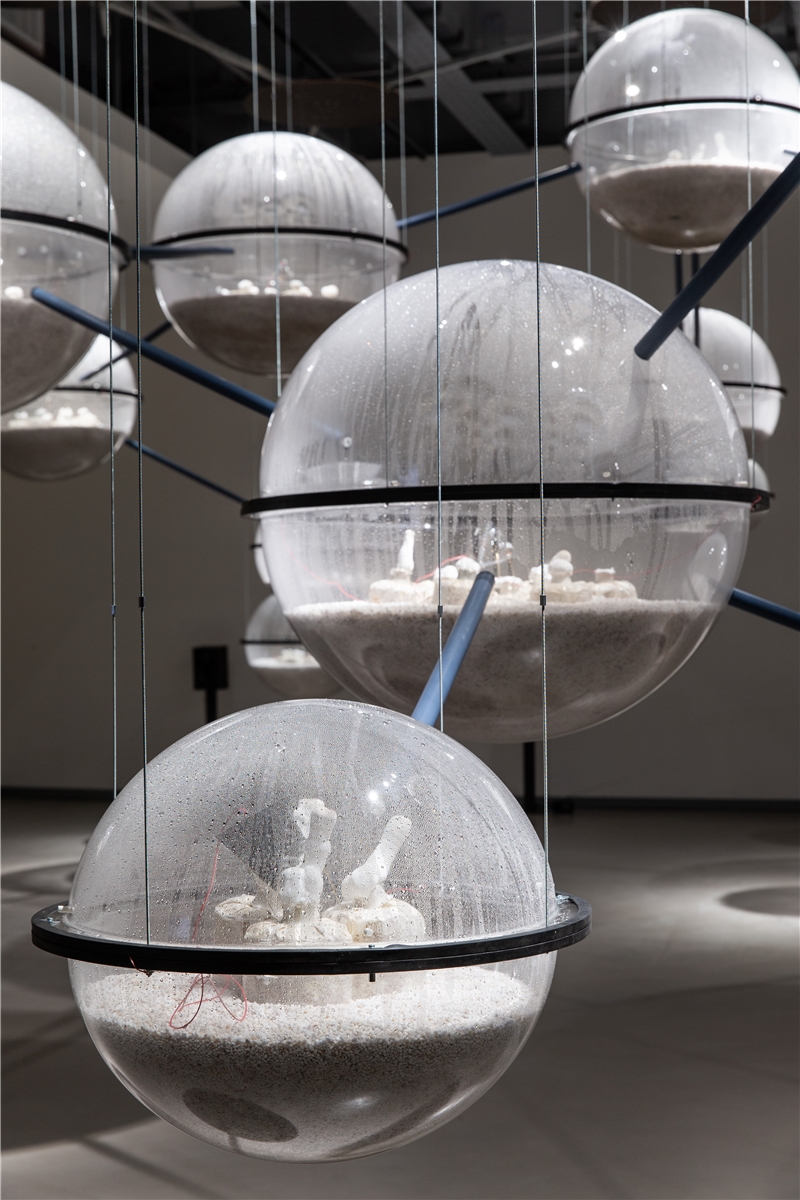Ecology and Planning Museums
Entering on the ground level to the ecology museum reveals a projection next to the restaurant and retail areas. an elevator takes guests to the top level where their descent through the three ecologies – earth to cosmos, earth to man, earth to earth – begins, connected through a series of ramps.
the earth to earth exhibit on the bottom floor features a plane that turns clockwise, moving slowly down towards the ocean ecology space appropriately situated under the reflecting pond of the exterior plaza. the earth to earth section contains four outdoor green terraces as temporary exhibit spaces that change with the seasons.The shared public square also marks the entrance to the planning museum where visitors are greeted by a large model of the eco-city and another temporary display area. a multimedia system makes the next sequence of program, the theory and practice zones, come to life with dynamic informative videos, images, and sounds, all located on the second level. mechanical escalators transport guests to the third floor where one-way display is turned into an interactive relationship with the viewer. this is accompanied by a 3D cinema and a restaurant with views out towards the sea. on the top storey one can find the green architecture, landscape and water resources exhibits as well as access to the vegetative roof-scape offering offering unmatched views.





